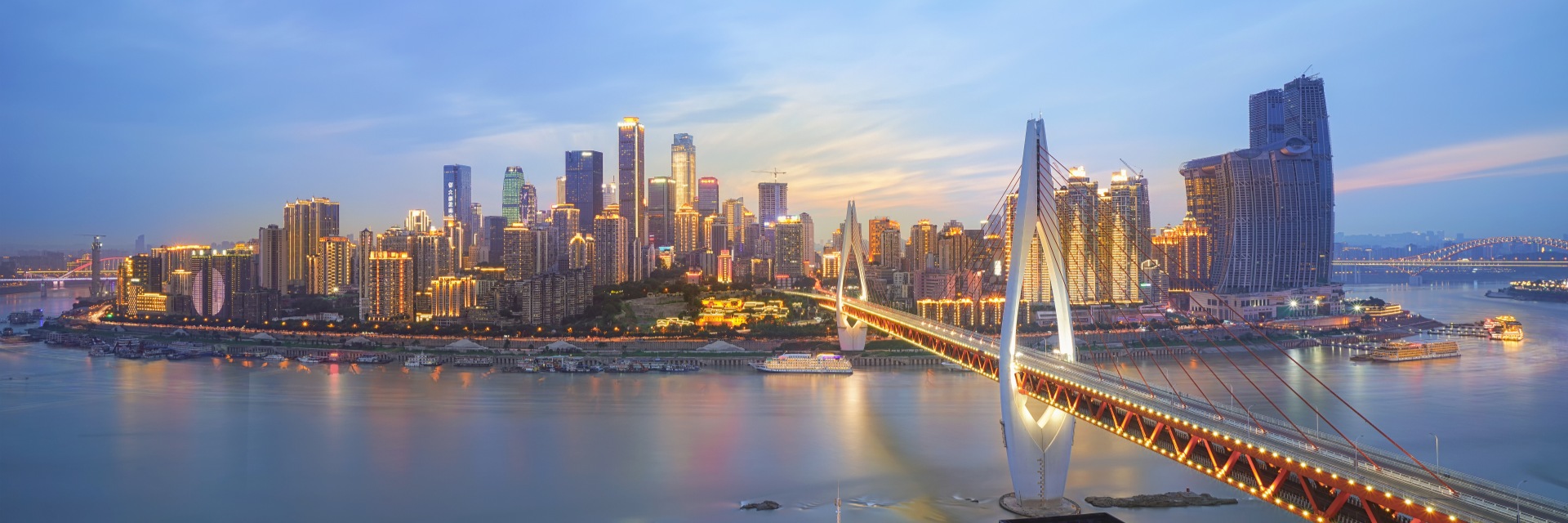
Things to Do in Chongqing: An Expert’s Guide to Chongqing
By Jane
Hello there! Jane here, and I’m thrilled to share my insights on Chongqing, a city that truly defies expectations. Often called an “8D Magic City” due to its complex, layered urban landscape and “Little Hong Kong” for its reminiscent skyline, Chongqing is a dynamic hub in Western China that promises a unique adventure. Having explored its depths, I can confidently say it’s far more exciting than generic travel recommendations might suggest.
Based on my latest visit, here’s what you shouldn’t miss. Remember, spring and autumn (like March to May or September to November) are prime times to visit, with mild temps around 15-25°C and fewer crowds.
Things to Do in Chongqing
Chongqing’s cultural scene is a mashup of ancient traditions and modern buzz, and I’ve always found it more authentic than touristy spots like Beijing. This city offers a profound cultural heritage that’s just waiting to be discovered, presenting layers of history and vibrant local life.
A Stroll Through Time at Ciqikou Ancient Town
Ciqikou Ancient Town is a must-visit for anyone keen to experience the historical pulse of Chongqing. This charming town, with origins over a thousand years old, features traditional architecture primarily from the Ming and Qing dynasties. It’s packed with teahouses, street food stalls, and artisan shops selling everything from silk fans to spicy noodles. As you wander its narrow, stone-paved streets, you’ll find an array of shops selling local crafts and souvenirs. Don’t forget to sample some local snacks – the street food here is incredibly authentic and delicious. It’s free to enter and easily accessible via Chongqing’s metro. I found myself losing track of time here, simply soaking in the atmosphere.
My tip: skip the midday rush and go early morning—grab a bowl of ci ba (sticky rice balls) from a local vendor for an authentic breakfast. It’s not just sightseeing; it’s a sensory immersion that highlights Chongqing’s Sichuanese roots.

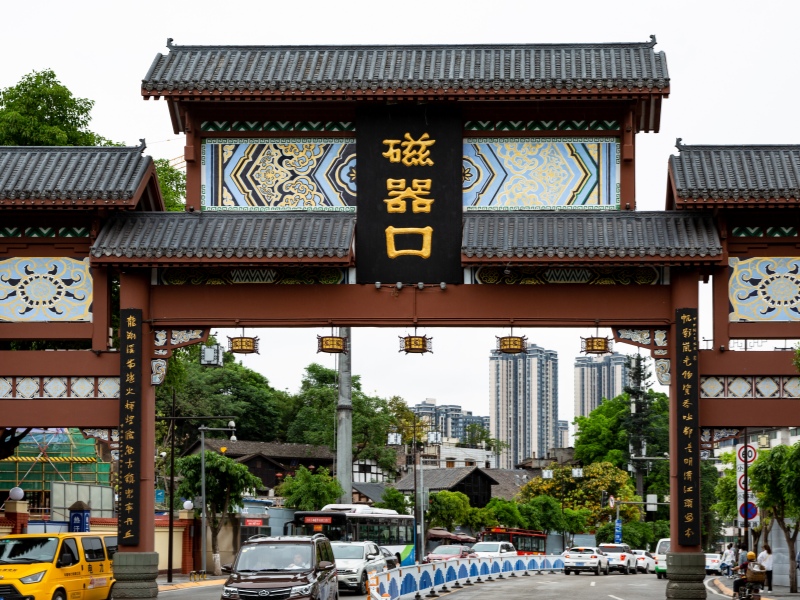
The Sacred Art of Dazu Rock Carvings
For art and history enthusiasts, a journey to the Dazu Rock Carvings is absolutely essential. This UNESCO World Heritage site, located a couple of hours from the city center, boasts an exceptional series of religious sculptures and carvings from the 9th to the 13th centuries. The detail and diversity of subject matter, predominantly Buddhist but also Taoist and Confucian, are simply breathtaking. The sites of Baodingshan and Beishan are particularly impressive. This is a profound artistic and spiritual experience that I believe truly highlights the region’s rich artistic legacy.
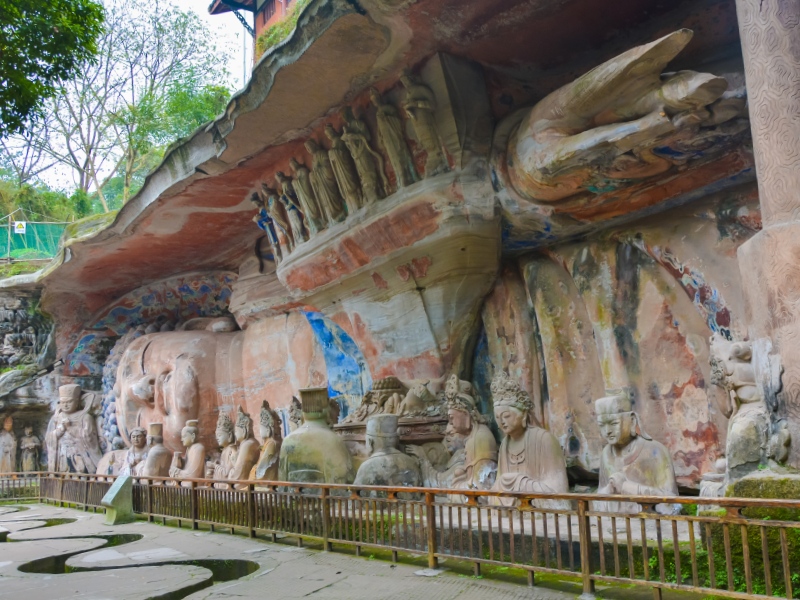
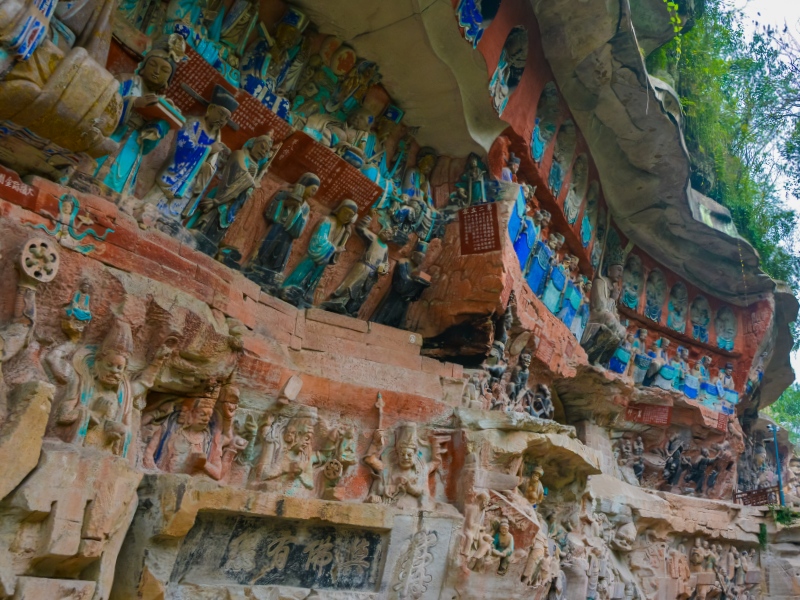
Delving into Regional History at the Three Gorges Museum
Located conveniently in the heart of Chongqing, the Three Gorges Museum provides comprehensive insights into the history and culture of the Three Gorges region and the city itself. Its vast collection includes ancient art, historical relics, and exhibits detailing the monumental Three Gorges Dam project. Learning about the geological formation of the Yangtze River and the communities that lived along its banks offers valuable context for your entire visit. The fact that entry is often free makes it an accessible and highly recommended cultural stop. As someone who’s guided groups here, I suggest pairing it with a visit to the nearby Huguang Guild Hall, a 1759 complex that showcases immigrant history from Hunan and Guangdong. Pro tip: If you’re into photography like me, the guild hall’s ornate architecture is gold at golden hour. These spots aren’t overhyped on TikTok yet, so you get a genuine feel without the crowds—perfect for culture buffs seeking expertise-led insights.
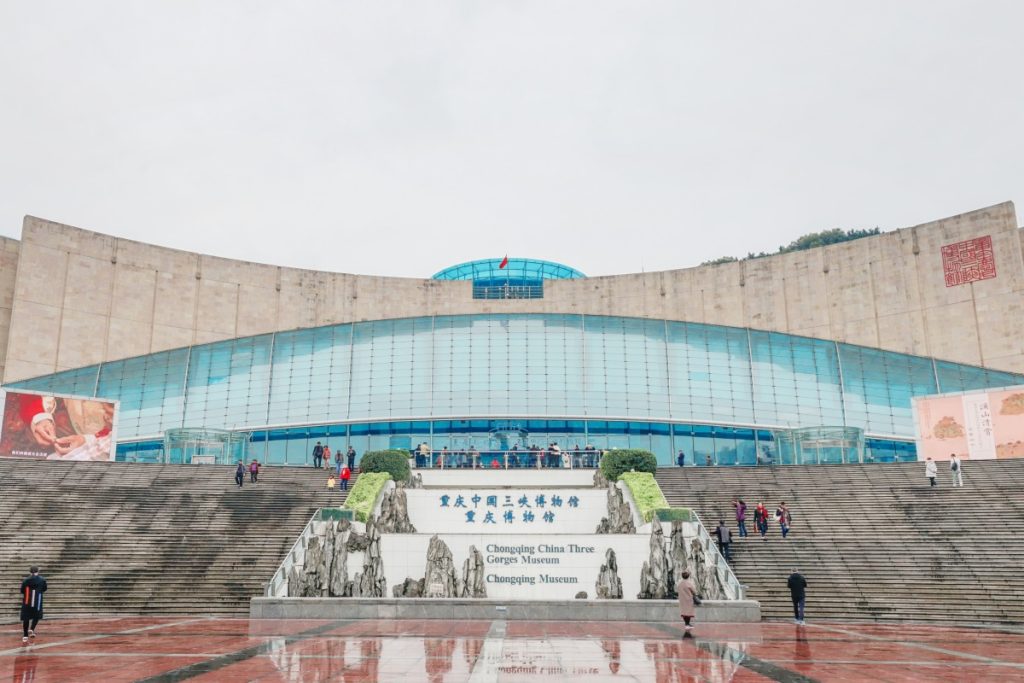
Chongqing’s Natural Wonders and Outdoor Escapes
Chongqing isn’t all skyscrapers; its outskirts offer raw nature that rivals Yunnan. The city’s dramatic topography, characterized by mountains and rivers, provides a stunning backdrop for outdoor adventures.
Wulong Karst National Geology Park: Nature’s Masterpiece
Just a few hours’ drive from Chongqing, the Wulong Karst National Geology Park is another UNESCO World Heritage Site renowned for its stunning karst formations. The park’s most famous attractions include the Three Natural Bridges, enormous natural limestone arches that create an awe-inspiring landscape. Walking beneath these colossal structures feels like stepping into another world. It’s about a 2-hour drive from the city, featuring fairy-tale-like sinkholes, caves, and the dramatic Longshuixia Fissure Gorge with its sheer cliffs and narrow walkways. Don’t miss Furong Cave (Hibiscus Cave), a vast limestone cave system filled with brilliantly illuminated stalactites and stalagmites. This area is perfect for hiking and photography, allowing you to truly marvel at nature’s power.
From my adventures, I recommend the full-day hike; wear sturdy shoes because the trails can be slippery after rain. I’ve led eco-tours here, and nothing beats the thrill of descending into Furong Cave—it’s like stepping into a subterranean wonderland.
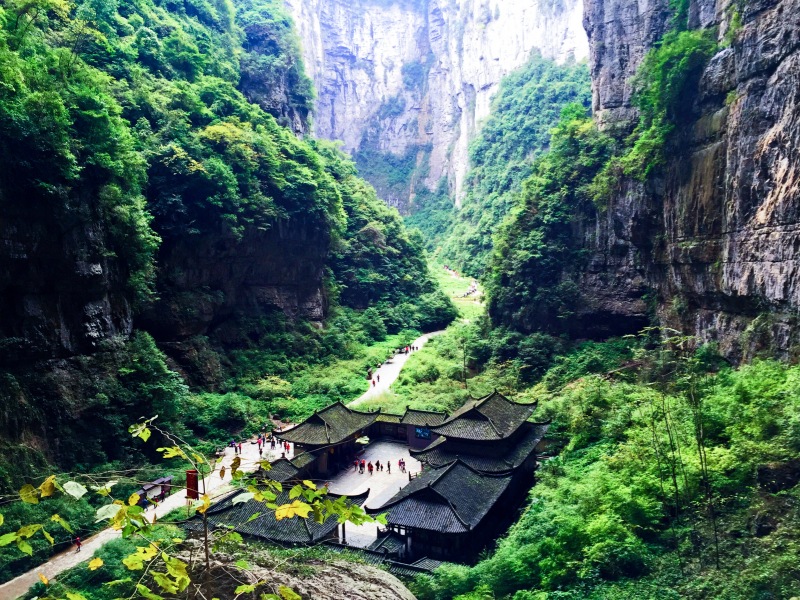
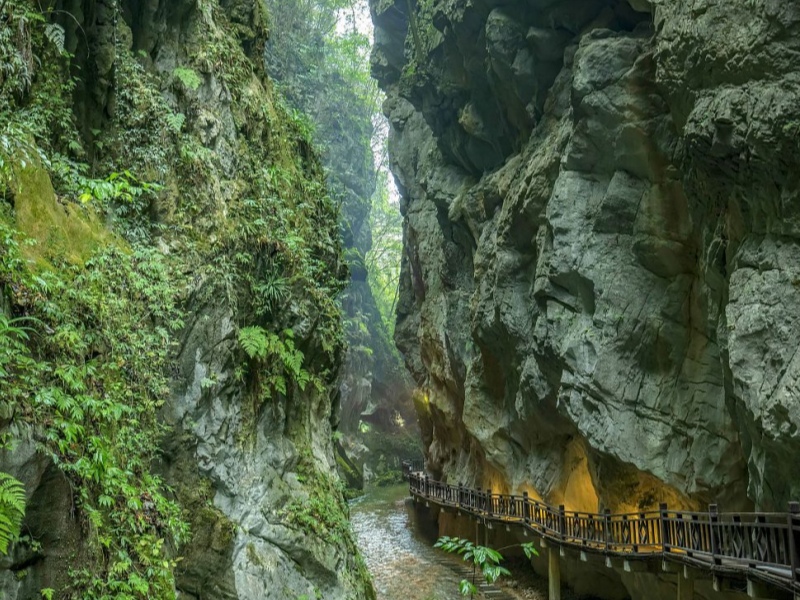
Majestic Yangtze River Cruises
Chongqing is a primary starting point for iconic Yangtze River cruises. Departing from Chaotianmen Dock, these multi-day journeys (typically 3-5 days) sail through the breathtaking Three Gorges—Qutang, Wu, and Xiling—with stops at ancient temples and gorges up to 700 meters deep. Witnessing the towering cliffs and serene waters, and passing through the locks of the massive Three Gorges Dam, is an incredible experience.
As of 2025, eco-friendly vessels are more common, reducing environmental impact. My suggestion? Book a sunset departure—watching the cliffs glow as you sip tea on deck is pure magic. It’s an experience that truly puts the scale of nature into perspective. It’s not just a cruise; it’s a nature history lesson, and I’ve seen travelers transform from skeptics to enthusiasts.
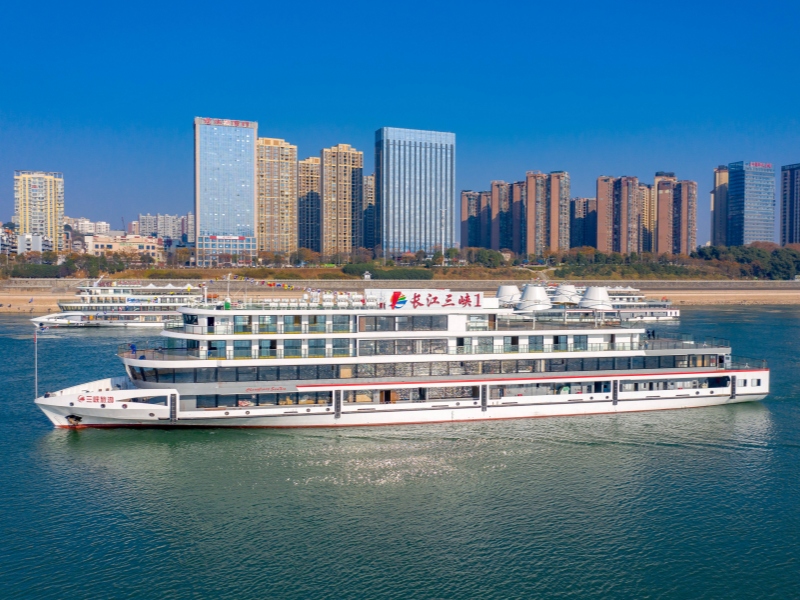

Eling Park: An Urban Oasis
For a peaceful nature escape without leaving the city, Eling Park is an excellent choice. Perched on a high hill, it offers panoramic views of the confluence of the Yangtze and Jialing Rivers, as well as the Chongqing peninsula. The park features traditional Chinese gardens and winding paths, with the Liangjiang Pavilion providing an excellent vantage point. It’s a great spot for a relaxing walk and to gain a different perspective of the city.
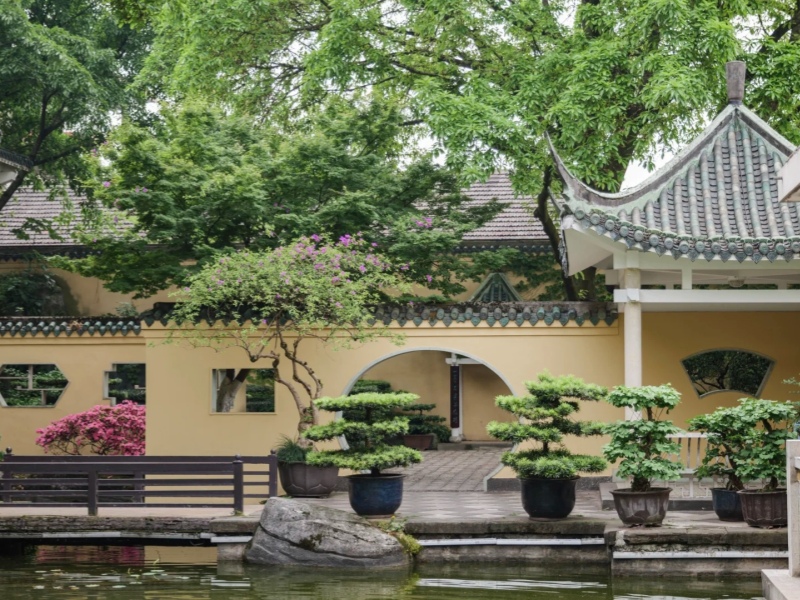
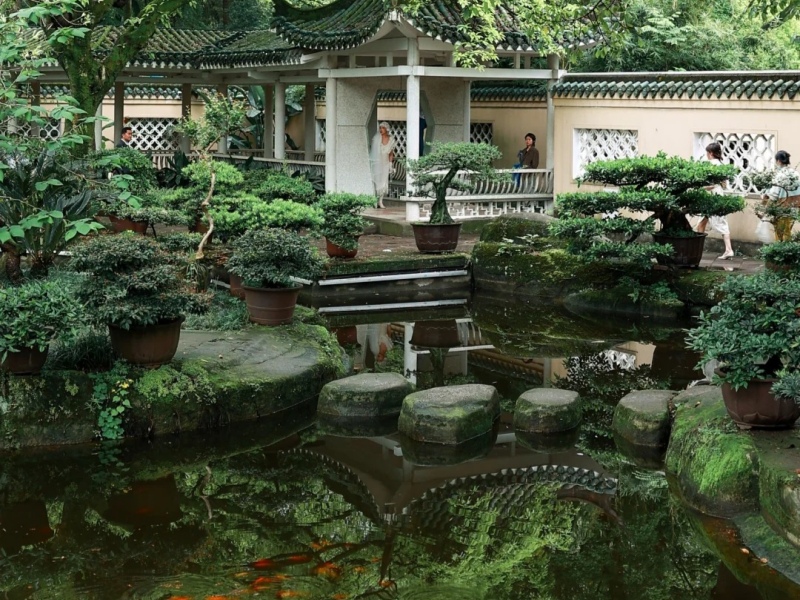
Experiencing Chongqing’s Dazzling Night Views
Chongqing truly comes alive at night. Its unique hilly terrain and riverside location transform into a breathtaking panorama of lights, solidifying its nickname “Mountain City.” The city’s nightlife is electric, often compared to Hong Kong’s skyline but with a spicier edge.
Hongya Cave: A Fairytale Illuminated
Hongya Cave is arguably Chongqing’s most iconic nighttime attraction. This sprawling complex of stilt-style wooden buildings, built along a steep cliff overlooking the Jialing River, becomes a magical wonderland when lit up at night. It’s reminiscent of a Studio Ghibli film scene. Wander through its bustling lanes filled with shops, restaurants, and teahouses, all while enjoying stunning views of the illuminated city and river. It’s free to enter and truly transforms after sunset. I recommend visiting both during the day and at night to appreciate its dual charm. In my expert view, visit at dusk for the transition from day to night; the LED lights reflecting on the water are mesmerizing. I’ve hosted night walks here, and pairing it with hotpot at a riverside spot elevates the experience—try the mala flavor, but go mild if you’re not spice-tolerant.
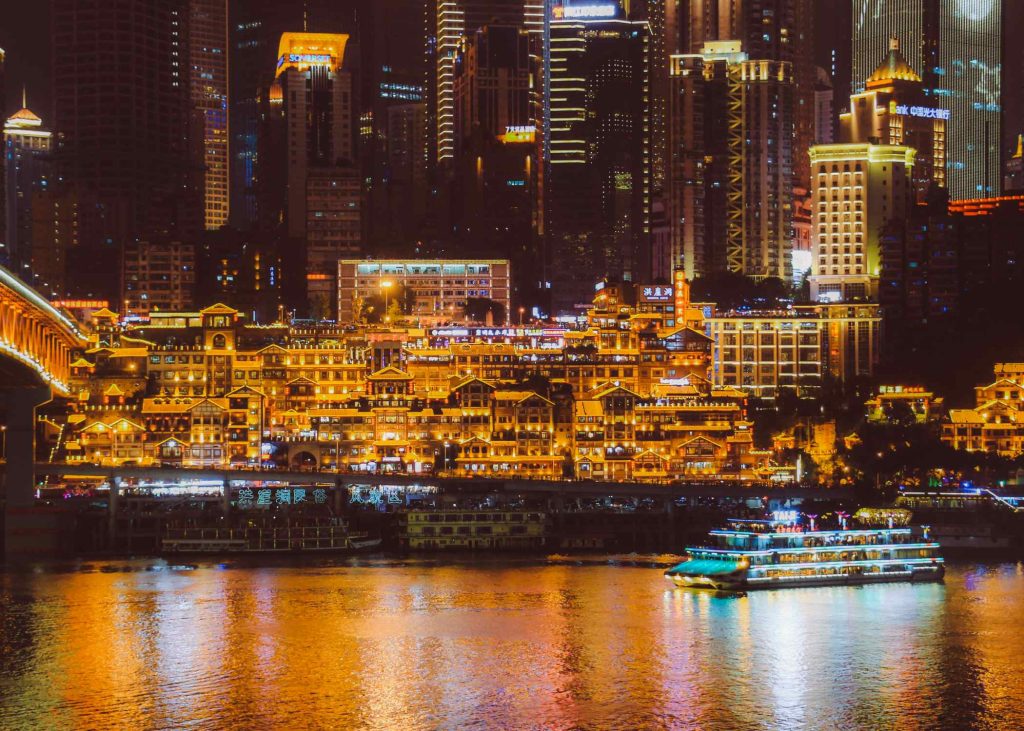
Spectacular City Panoramas
For the best bird’s-eye views, head to Nanshan Mountain on the south bank of the Yangtze. The “Yi Ke Shu” (One Tree) viewing platform offers famous panoramic vistas of the entire Yuzhong Peninsula. Alternatively, the WFC-Huixianlou Observation Deck, one of Western China’s tallest buildings, provides a 360-degree view of the city’s glittering lights. Taking a night cruise on the Yangtze or Jialing River also offers a unique perspective of Chongqing’s illuminated skyline, especially from Chaotianmen Dock where the two rivers meet. Another gem: Nanshan One Tree Pavilion for panoramic views. Climb the hill (or take a cable car) for a 360-degree vista of the glittering city. Pro tip from my trips: Pack a picnic and stargaze—it’s less touristy and more romantic than crowded viewpoints.
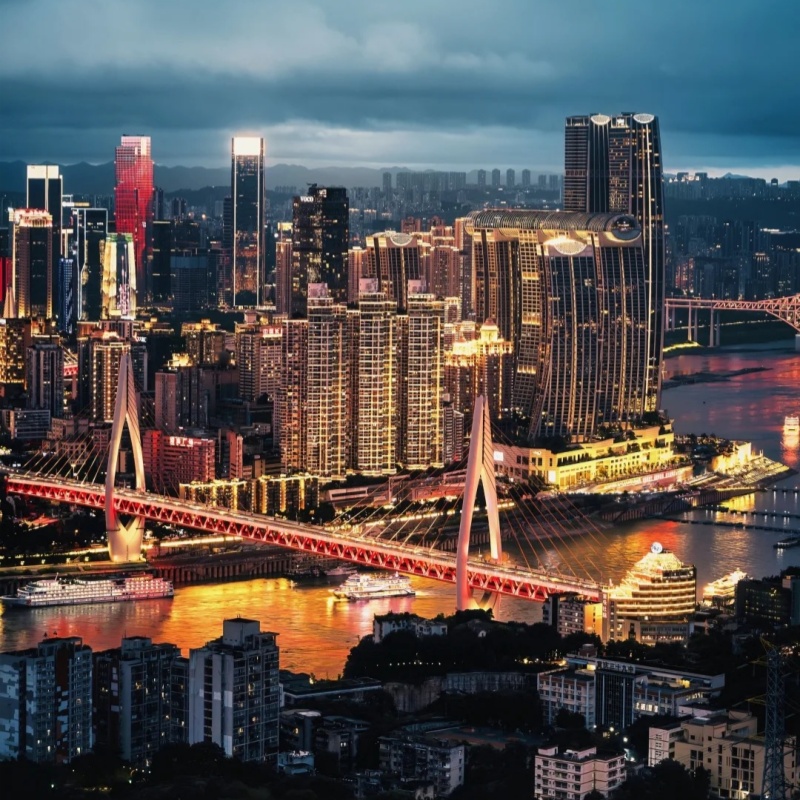
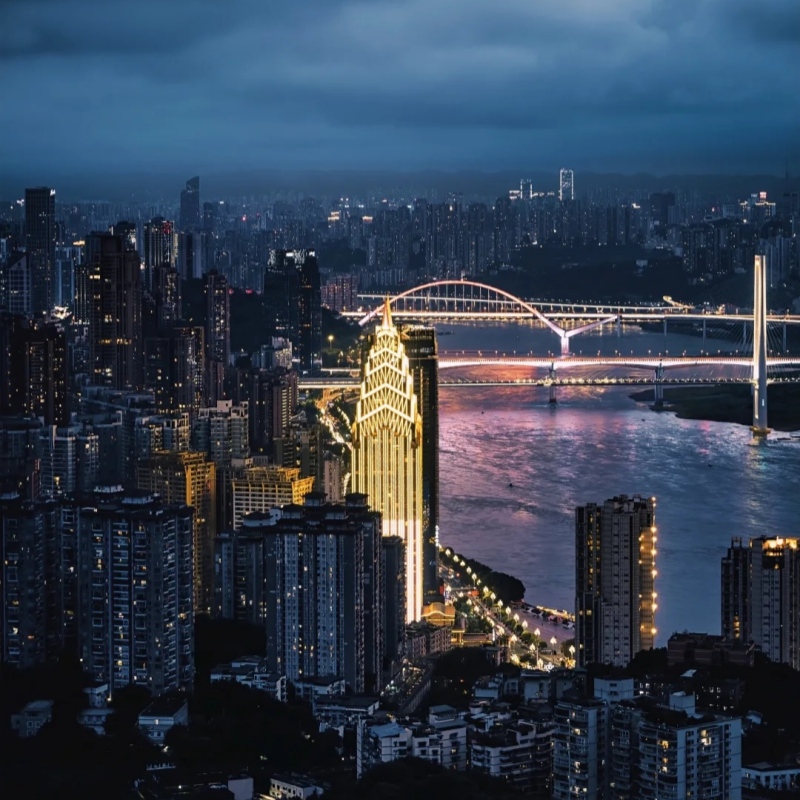
Liziba Station: A Monorail Marvel
This quirky spot is where the city’s light rail literally passes through a residential building. It’s a surreal experience that showcases Chongqing’s 8D urban layout. Bring your camera—it’s a viral-worthy moment! For a unique twist, check out Liziba Station, where the metro train zips through a residential building. It’s gone viral on TikTok, but arriving via Line 2 around 8 PM lets you capture the illuminated spectacle without hordes.
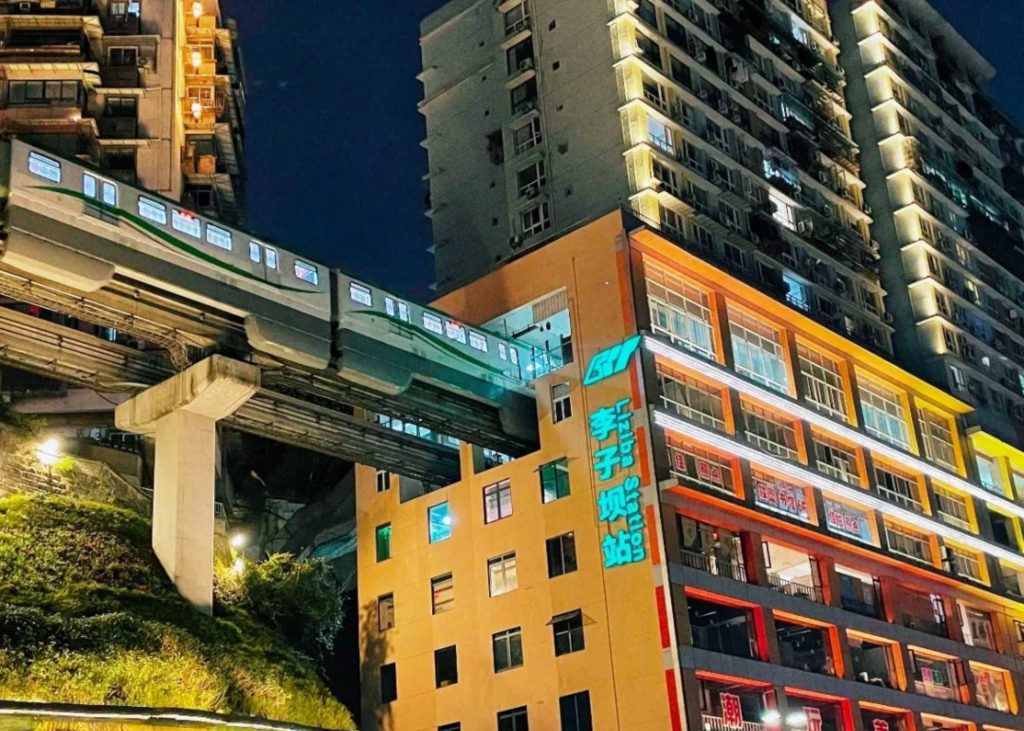
Chongqing’s Culinary Delights: A Taste of the City
No trip to Chongqing is complete without indulging in its famous cuisine. The city is a haven for food lovers, especially those who appreciate bold and spicy flavors.
Chongqing Hot Pot: The City’s Signature Dish
This is the city’s signature dish, and for good reason. The spicy, numbing broth is addictively delicious. For first-timers, I recommend starting with a double-flavor pot to ease into the heat. Cuts to try: yellow throat tripe, duck intestine, fresh beef slices, lotus root; finish with cold tofu pudding. Book popular spots or arrive early; lines after 7 pm are real. If you’re spice-sensitive, order yuanyang (dual broth) and specify “shao la jiao” (less chili).
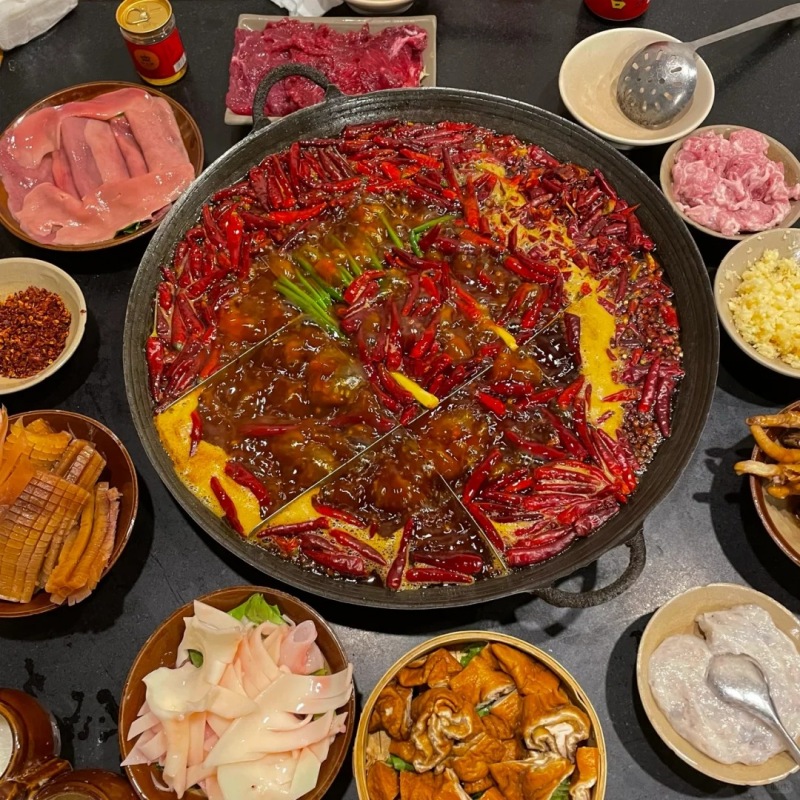
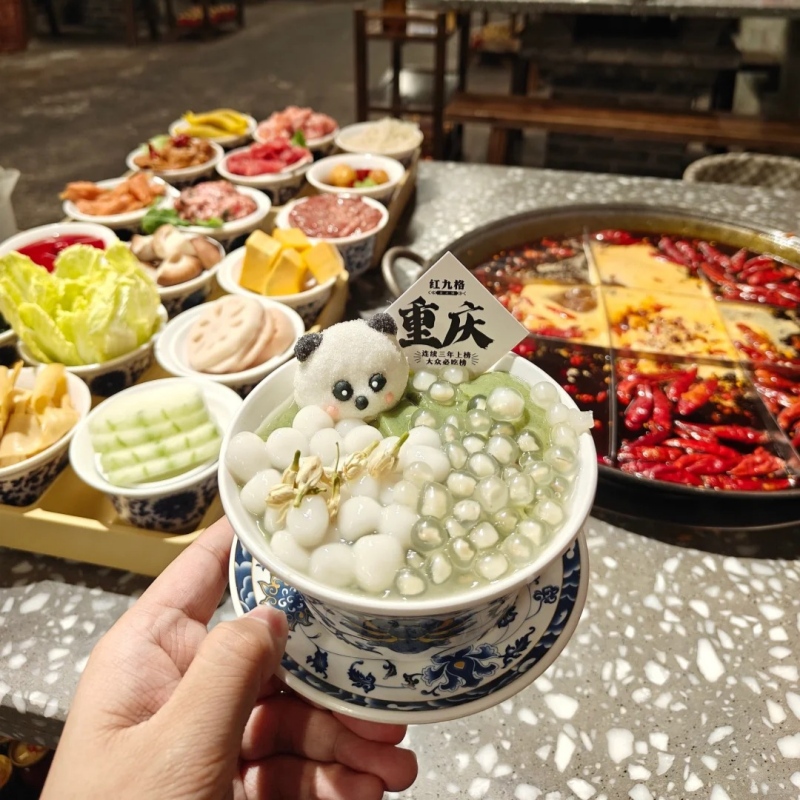
Local Noodles and Street Food
Chongqing’s small noodles and hot and sour rice noodles are must-tries. They’re spicy, flavorful, and utterly satisfying. Jiefangbei and Hongyadong are hotspots for street food. From skewers to spicy grilled fish, there’s something for every palate. My strategy: taste, not feast—save your main meal for a vetted hotpot or riverside grilled fish.
| Food | Description | Why Try It? |
| Chongqing Hot Pot (Huoguo) | A simmering pot of spicy (or non-spicy) broth where you cook your own selection of thinly sliced meats, vegetables, mushrooms, tofu, and noodles. Often features Sichuan peppercorns for a unique numbing sensation. | It’s the quintessential Chongqing dining experience – flavorful, interactive, and a great way to socialize. A true taste of local culture. |
| Chongqing Small Noodles (Xiao Mian) | A simple yet delicious bowl of wheat noodles typically served in a spicy, savory sauce with various toppings like minced meat, peanuts, preserved vegetables, and green onions. | A beloved local breakfast or quick meal. It’s cheap, widely available, and offers an authentic taste of everyday Chongqing. |
| Spicy Grilled Fish (Kao Yu) | A whole fish, often carp or catfish, is grilled and then simmered in a flavorful, spicy broth with various vegetables, tofu, and sometimes noodles. | Aromatic, rich, and satisfying. It’s a popular dish for sharing and showcases the bold flavors of Sichuan cuisine. |
| Small Glutinous Rice Balls (Tangyuan) | Small, chewy glutinous rice balls, often filled with sweet black sesame paste or other fillings, served in a lightly sweetened soup or dry. | A traditional dessert or snack, especially popular during festivals. They are comforting and offer a sweet contrast to the spicy main dishes. |
Chongqing is a city that truly rewards the adventurous traveler with its unique blend of history, breathtaking natural beauty, dazzling urban spectacles, and unparalleled culinary experiences. From the ancient charm of Ciqikou to the modern marvels of Hongya Cave at night, and the majestic landscapes of Wulong Karst, Chongqing offers a journey unlike any other. Its “8D” topography and vibrant culture create a dynamic atmosphere, inviting visitors to delve deep into its layers. By embracing its spicy flavors, navigating its hilly streets, and marveling at its illuminated skyline, you will discover why Chongqing is often hailed as one of China’s most fascinating destinations. This guide, curated from my extensive experience, aims to provide you with the insights needed to tailor-make an unforgettable adventure in this extraordinary “Mountain City.”
Explore More: